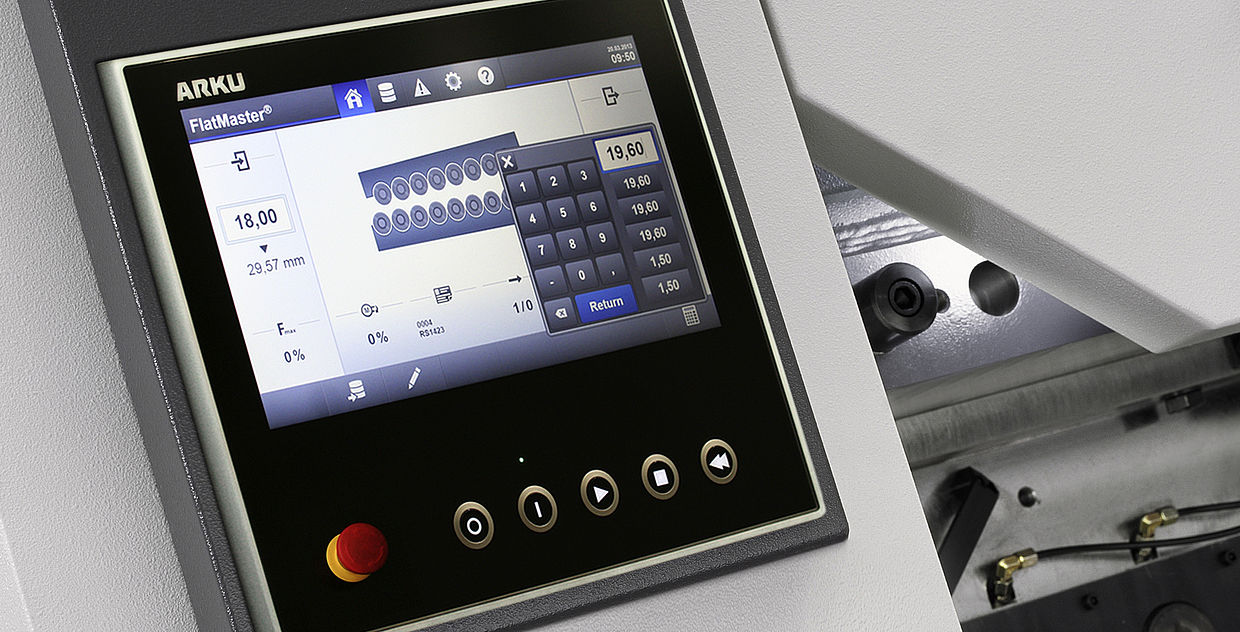The cause of distortion in sheet metal parts is usually inherent stresses within the sheet. They already occur during the rolling mill process or at in-house production during thermal cutting or punching. If you want to be sure that the residual stresses have been eliminated, there is no way around leveling. There are several ways of doing this - from manual work to roller levelers. An overview of this can be found in the article Methods of leveling sheet metal.
To a large extent, the result of the leveling process certainly also depends on the quality of the material. Sheet metal workers know how much the initial material quality can fluctuate. But, on the other hand, the customer always expects the agreed upon result. With leveling, however, even poor quality sheets can be made usable again, as we show you in the article Toll processing saves sheet metal and machines. Customers and colleagues are also pleased with the improved quality.
Roller leveler achieves the optimal results
The best flattening results can be achieved with a roller leveler. For this purpose, the sheet - from thin foils to 100 mm thick plates - is guided through rollers. These are offset and guide the sheet metal alternately up and down. The first bending deformation takes the material past its yield point which releases the stress in the material. Further on, the sheet metal is bent back and forth less and less. This way, the leveler eliminates residual unevenness and residual stresses. In the end, a flat part, sheet or plate, emerges from the roller leveler.
The machine design plays a decisive role for the leveling result. It starts with the number of leveling rollers - the more rollers, the flatter the sheet metal. They should also have the smallest possible diameter and spacing. However, the larger the leveling rollers, the wider the processing spectrum in which the machine can level the sheet metal. The thicker the material to be processed, the thicker the leveling rollers have to be.
Back-up rollers extend the range of applications of the roller leveler
Back-up rollers are also installed in roller levelers to support the leveling rollers. They prevent the leveling rollers from deforming across their width. In high-performance levelers, the back-up rollers can do even more: They can be moved with the aid of a back-up roller adjustment. This causes the center of the leveling rolls to dip deeper into each other. They can then additionally stretch the center of the material and thus eliminate edge wave deformities. If the surface of the material needs to be protected, intermediate rollers between the leveling and back-up rollers are an option.
The rollers themselves are mounted in a rigid block. This further supports the leveling rollers and prevents the pressure of the sheet metal parts from bending the rolls. The machine frame must also be as rigid as possible to achieve a good leveling result.
Roller levelers with a servo-hydraulic leveling gap control are particularly effective. This makes it possible for a sheet to become flat and stress-free even with variable cross sections. In addition, the machine can always level with maximum force, as it is protected against overload and resulting damage.
Intelligent control aids with leveling
Last but not least, an intelligent control system supports to achieve an excellent leveling result. It can:
- Suggest the right setting to the operator to quickly achieve the desired results.
- Save and recall various tool settings.
- Record necessary information about the work piece via the barcode scanner.
- Remind you of upcoming tasks with saved maintenance schedules.

In this way, the control system automatically eliminates a whole range of human error sources and makes the leveler intuitive to operate.
"You enter the parameters. Then the leveler automatically makes the settings - and that's it"
Thomas Pröbster, Fertigungsleiter bei Silberhorn Blechtechnik
With the aid of modern roller levelers, users are therefore able to reliably relieve the residual stresses in the sheets. This simplifies the subsequent processes and makes the sheet metal parts more precise.
